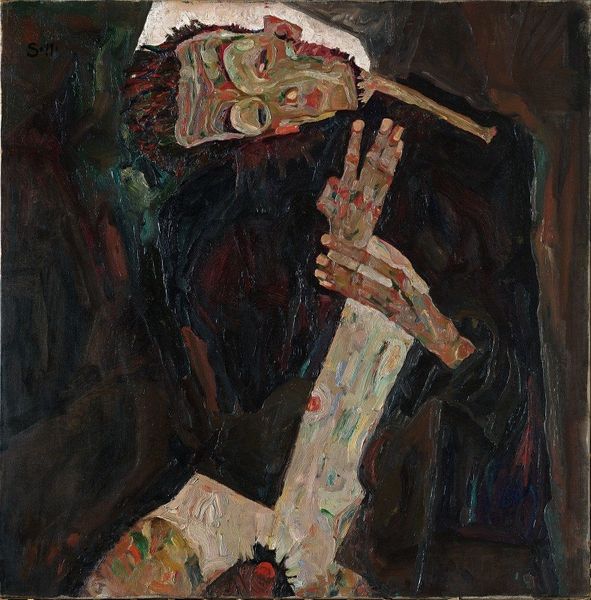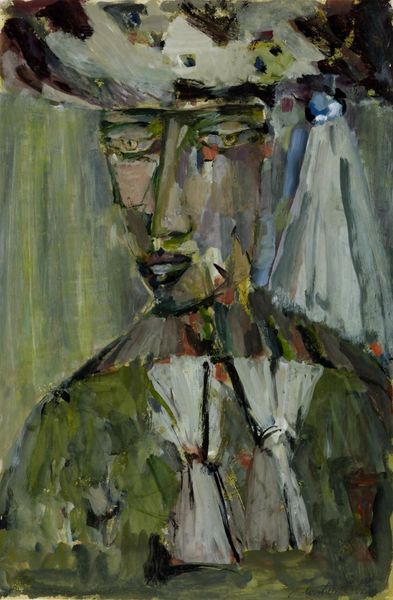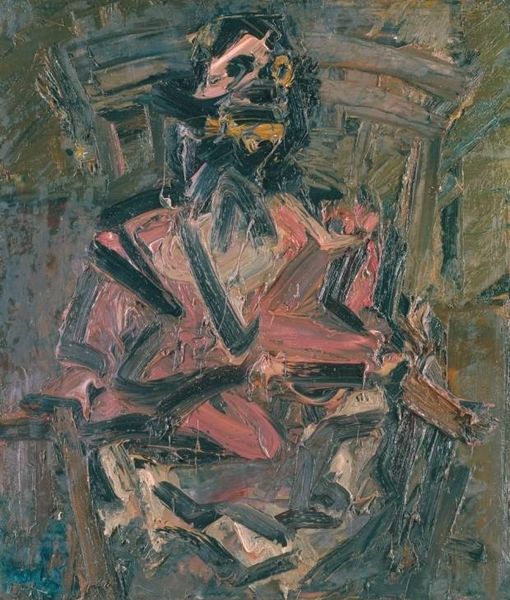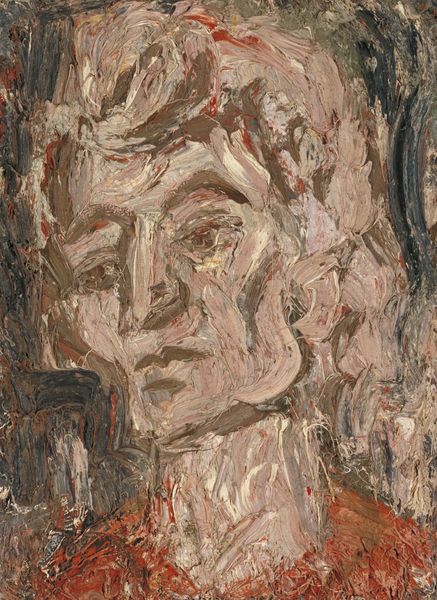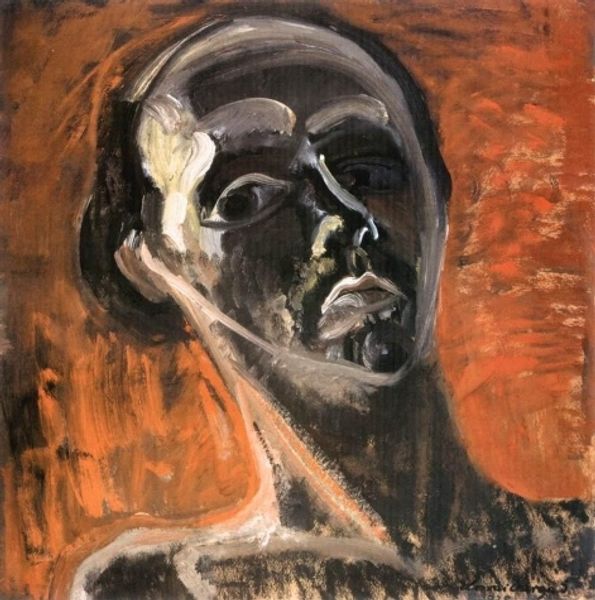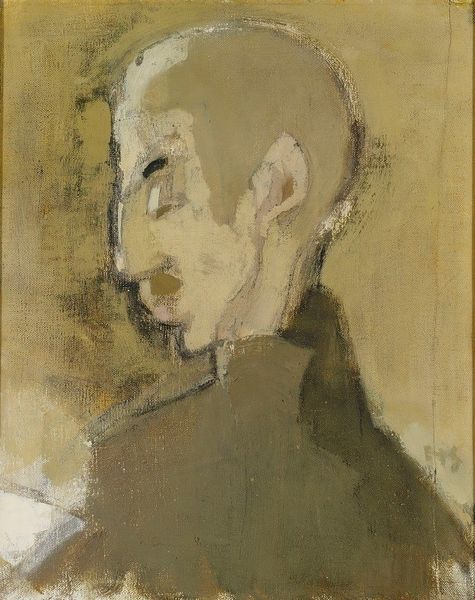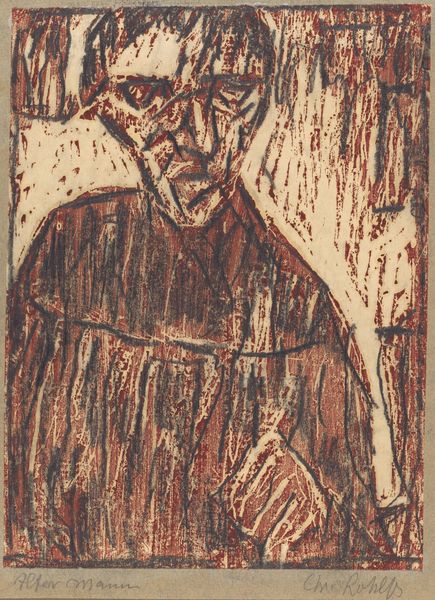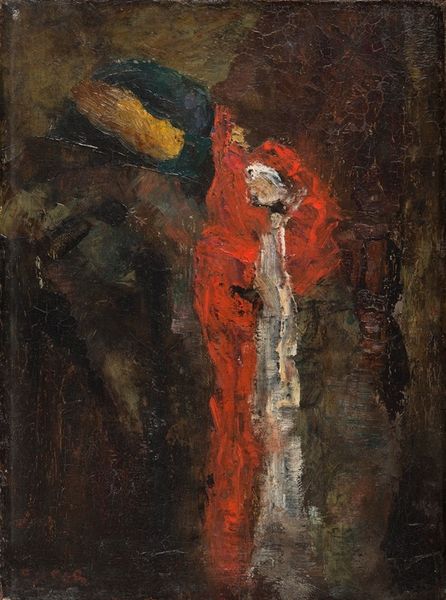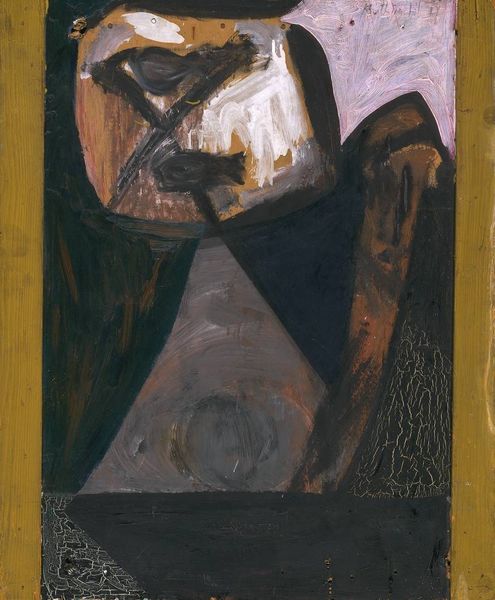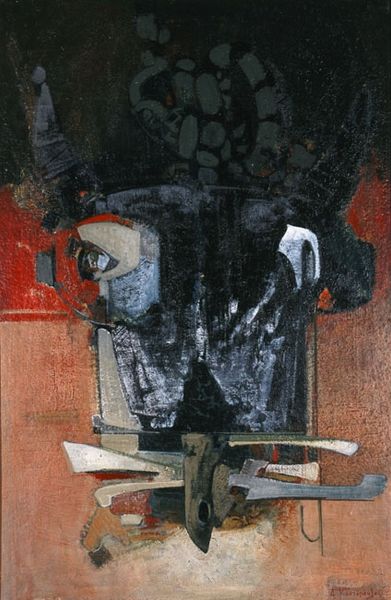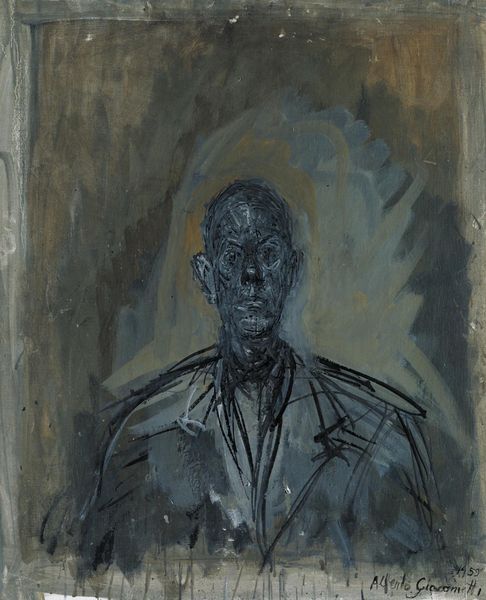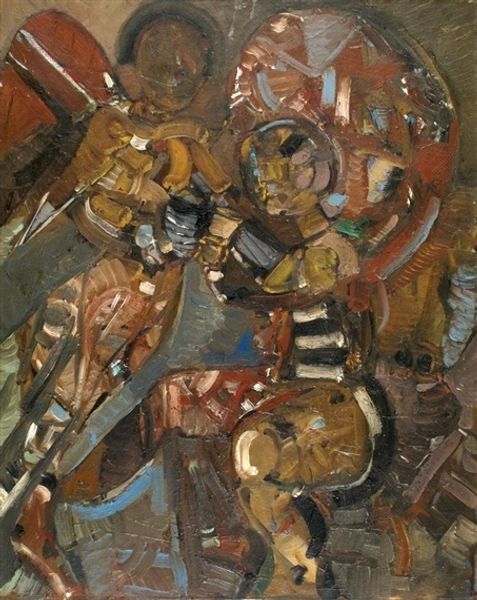
oil-paint
#
figurative
#
self-portrait
#
oil-paint
#
figuration
#
oil painting
#
neo expressionist
#
expressionism
Copyright: Public Domain: Artvee
Editor: Here we have Egon Schiele's 1911 oil painting, *Self-Seer II*. The color palette is really muted, mostly browns and grays. And it features these distorted figures that give the painting a haunting quality. What do you see in this piece? Curator: Well, let’s start with the doubled figure. It evokes a kind of self-scrutiny, doesn't it? Schiele's repeating of himself within the same canvas speaks to a culture grappling with evolving identities. Do you see any symbolism embedded in that recurring image? Editor: It makes me think of doubling or multiplicity, maybe representing internal conflict. It reminds me of other early 20th century ideas around psychoanalysis... Curator: Precisely. Schiele engages with visual echoes of his time. The self becomes not singular but fragmented, viewed from shifting perspectives. His work touches upon anxieties of authenticity in a rapidly modernizing world, with visual fragmentation conveying psychological uncertainty. How does his use of line contribute to this, in your opinion? Editor: I hadn’t thought about the lines... they look nervous, and really emphasize the figures' angularity. Curator: Those harsh lines articulate a departure from traditional portraiture. It moves away from mere physical representation to delve into psychological depth. The "self" morphs into an artifact explored and defined through symbolic gestures. What did you make of those reaching hands? Editor: Hmm, maybe an offering? Or a warning? This dialogue has me noticing elements that previously escaped my attention! Curator: And in understanding its symbols, one grasps the core essence that transcends a simple "self-portrait," thereby making the work enduringly impactful. I see now, as I speak about it, even deeper significance.
Comments
No comments
Be the first to comment and join the conversation on the ultimate creative platform.
